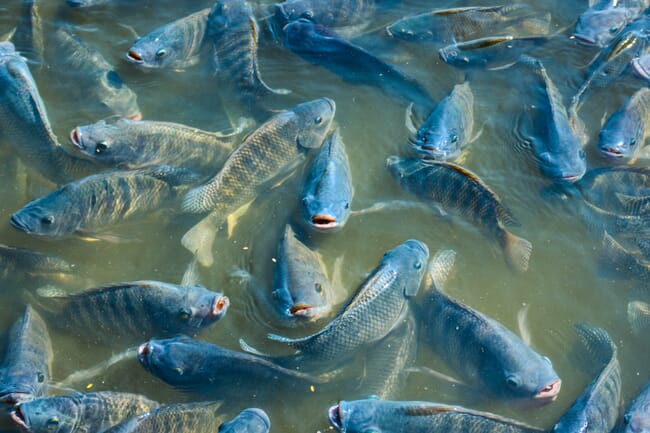
The new research may help to fine-tune tilapia breeding programmes
Genetic analysis has revealed genes associated with muscle development and fillet yield in a region of the tilapia chromosome, showing evidence of changes brought about by selection on the genome, either from environmental effects or human-mediated breeding. The finding makes the genetic variants in this region potential targets for selective breeding of fish for market, researchers say.
The research team used multiple strategies to describe genetic variation and characterise population structure in diverse strains of farmed Nile tilapia (Oreochromis niloticus) around the world and to identify regions of DNA possibly associated with selective breeding.
The study, by the Roslin Institute in collaboration with aquaculture research hub WorldFish and the Department of Fisheries Malaysia, is the first to apply a pooled sequencing approach to identifying genes under selection in Nile tilapia, allowing the analysis of DNA from multiple individuals simultaneously and generating rich data while driving down costs.
“Our research may benefit both the aquaculture industry and consumers by improving the quality and efficiency of Nile tilapia breeding. This study carries potential implications for the genetic management and improvement of Nile tilapia populations in order to meet the growing demand for sustainable seafood, and ensuring the long-term viability of tilapia farming,” said Dr Pam Weiner, from the Roslin Institute, in a press release.
Enhanced understanding
The findings of this study provide valuable insights into the genetic makeup of farmed Nile tilapia populations, shedding light on the recent domestication process.
By better understanding patterns in this species’ genes, breeders can make informed decisions to enhance the productivity and sustainability of these farmed fish. The study also provided validation for the usefulness of an open access tool previously developed at the Roslin Institute to identify differences in the species’ genetic makeup.
The results of this study open new avenues for further research and advancement in Nile tilapia breeding programmes, contributing to the growth and development of aquaculture practices worldwide.
This research, published in Evolutionary Applications, was supported by the CGIAR Research Programme on Fish Agri-Food Systems (FISH), led by WorldFish.
